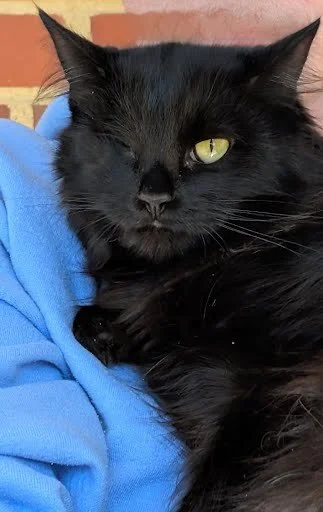Understanding FIP in Cats: Symptoms, Treatment, and Hope
Feline Infectious Peritonitis (FIP) has long been one of the most devastating diagnoses a cat owner can receive. Once considered a death sentence, FIP is now treatable thanks to groundbreaking antiviral medications.
What is FIP?
FIP is caused by a mutation of the feline coronavirus (FCoV). Most cats carry a harmless form of this virus, but in some cases—especially in young cats, those in high-stress environments, or those with weaker immune systems—the virus mutates into a deadly form, leading to FIP.
FIP occurs in two primary forms:
Wet (Effusive) FIP – This form causes fluid accumulation in the abdomen or chest, leading to difficulty breathing and a swollen belly. It progresses rapidly without treatment.
Dry (Non-Effusive) FIP – This form causes inflammation in various organs, leading to neurological issues, eye problems, or organ failure. It can be harder to diagnose due to its vague symptoms.
Who is at risk?
Kittens and young cats under 2 years old
Cats in multi-cat households or shelters
Cats with weakened immune systems due to stress or other illnesses
Symptoms of FIP
Good Golly Miss Molly, a RAL cat, was treated for FIP while in foster care
FIP symptoms vary depending on the form of the disease but may include:
Fever that doesn't respond to antibiotics
Loss of appetite and weight loss
Lethargy and weakness
Swollen belly (in wet FIP)
Difficulty breathing (if fluid builds up in the chest)
Neurological signs (wobbliness, tremors, or seizures in dry FIP)
Changes to the eye such as cloudiness or discharge
Early diagnosis can be challenging, as symptoms can mimic other diseases. There is no single definitive test for FIP, but veterinarians use a combination of bloodwork, imaging, and analysis of fluid samples when applicable.
Treatment & The Cost of Care
For years, a diagnosis of FIP meant preparing for the worst. But in recent years, antiviral drugs—specifically GS-441524, the active compound in remdesivir—have changed the outlook. These drugs block the virus from replicating, allowing the cat’s immune system to recover and fight off the disease.
💊 How is FIP treated?
Daily oral or injectable antiviral medication for 84 days (12 weeks)
Regular exams and bloodwork to monitor progress
Supportive care (fluids, appetite stimulants, anti-nausea meds if needed)
The cost of treatment varies based on the cat’s weight and medical needs. On average, treating a small cat or kitten may cost $2,000 to $4,000 for the full course, including vet visits and supportive care. Larger cats or those requiring a longer treatment period may have higher costs.
Why is treatment expensive?
The medication itself is costly. While it is now available through some veterinary compounding pharmacies, it is still not widely FDA-approved for veterinary use in the U.S.
Veterinary monitoring is essential to adjust treatment as needed and catch potential complications early.
FIP in Shelters & How You Can Help
For animal shelters and rescues, FIP has historically been a heartbreaking challenge. Many organizations did not have the means to treat affected cats, leading to difficult decisions. However, shelters are now fighting back. The University of Florida’s Shelter Medicine Program has been at the forefront of using GS-441524 to save shelter cats with FIP, helping to rewrite the narrative around this disease.
Their work emphasizes that with proper treatment and community support, FIP-positive cats can survive and thrive. However, shelters rely on donations to fund these treatments, as they are beyond the typical medical budget for most rescues.
A Message of Hope
Thanks to advances in veterinary medicine, FIP is no longer an automatic death sentence. Cats who receive treatment have an over 80% survival rate and go on to live normal, healthy lives. The journey is tough, but with the right care—and the generosity of animal lovers like you—FIP-positive cats have a fighting chance.
If you’d like to support our efforts to treat FIP and help our feline friends, please consider donating to RAL. Every dollar makes a difference in saving lives.
References & Additional Reading


